Key Points:
- Most bear markets are usually followed by a rebound for stocks and an increase in bond yields.
- Modeling a post-bear market rebound can be done in WealthTrace.
- Recent bear markets how shown the value of diversification.
This year the markets have begun pricing in much higher odds of a recession occurring. The yield curve has inverted several times, signaling that many investors are predicting a recession in the near future along with a prediction that the Federal Reserve will lower interest rates soon.
Recessions are difficult to predict, but it is a good idea to know how a recession might impact your investment portfolio and your retirement plan. That is why WealthTrace has an entire section dedicated to running bear market scenarios where users can change the returns in a bear market for a variety of asset classes.
Modeling The Recession Of 2001
In a previous post we showed how one can model various recessions and bear markets that have occurred in the past. WealthTrace now has built-in bear markets for two recessions as you can see below.
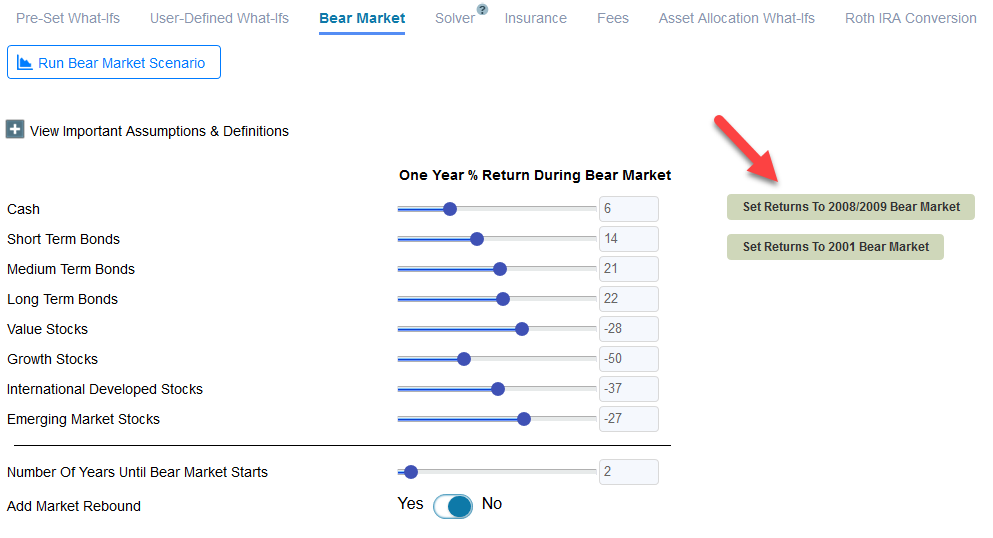 Easily switch between the two most recent bear markets in stocks.Easily switch between the two most recent bear markets in stocks.
Easily switch between the two most recent bear markets in stocks.Easily switch between the two most recent bear markets in stocks.
I created a plan to run through the WealthTrace bear market scenario. In this plan we have a 55 year old couple that will retire when they are 62. They currently have $800,000 saved to their 401(k) plans and they contribute a combined $15,000 a year to them. Their investment allocation is 90% in stocks and 10% in medium-term treasury bonds. They will switch their allocation to a 60/40 split between stocks and bonds when they retire. They project that they will spend $60,000 a year in retirement. Their base case results where stocks returns 7.5% per year each year and bonds return 2.5% per year are below.
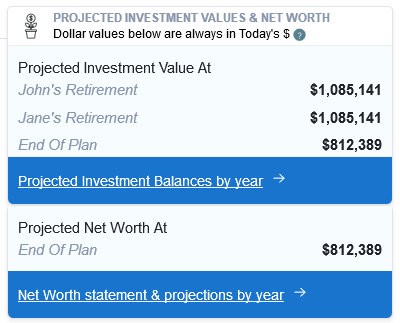
Their Monte Carlo results, where the program runs 1,000 simulations on their portfolio and gives a probability of never running out of money, are below.
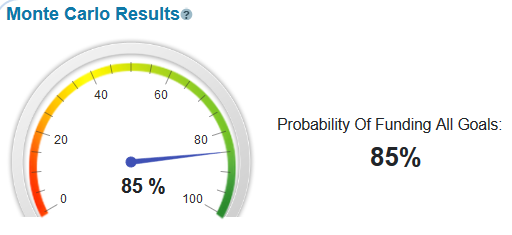
These results show that this couple is in decent shape, but they definitely have some risk. To see just how much risk they have to another market downturn, I ran the bear market scenario for 2001 and I set it to occur two years from now.
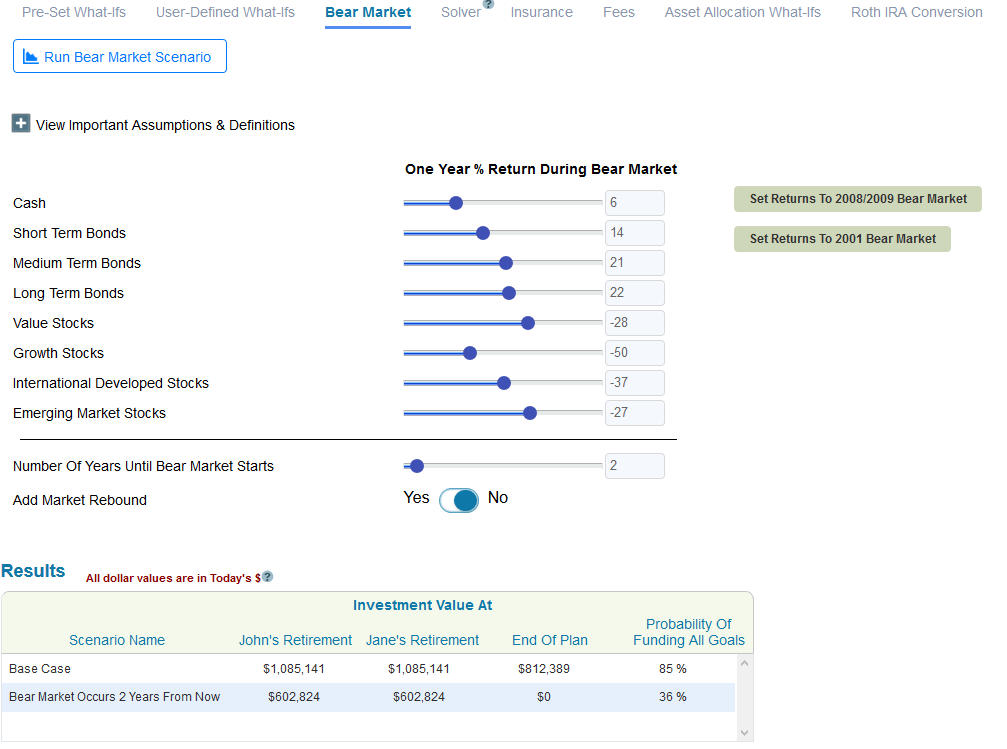 Bear market scenarios can tell you how your portfolio might hold up in another market downturn.Bear market scenarios can tell you how your portfolio might hold up in another market downturn.
Bear market scenarios can tell you how your portfolio might hold up in another market downturn.Bear market scenarios can tell you how your portfolio might hold up in another market downturn.
Another market downturn like we saw in 2001 would be very painful for this couple. Their projected investment assets at retirement fall from over $1 million to barely $600,000. Their probability of never running out of money falls substantially from 85% to 36%.
As we know, the stock market did rebound after 2001 and bond market returns fell. The stock market rebound immediately after the 2001 recession only lasted one year and stock returns were about 10% higher than normal. Bond returns also fell during this time by about 1%. I was able to model this using the ‘Add Market Rebound’ feature in WealthTrace.
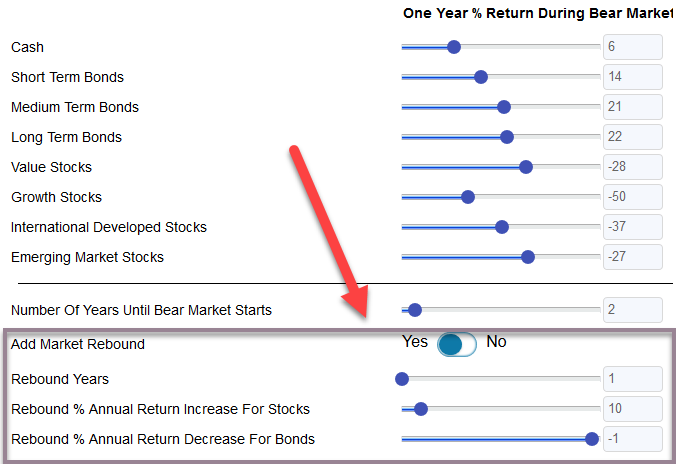 Add a market rebound for stocks and market decline for bonds after the bear market is over.
Add a market rebound for stocks and market decline for bonds after the bear market is over.
After adding in the market rebound I found the following scenario results:

The rebound helped them, but not enough to help them sleep better at night. The main issue for this couple is that they are 90% in stocks at age 55. They are also not diversified among enough asset classes. One of the keys to withstanding market downturns is diversification.
I diversified them among growth stocks, value stocks, emerging market stocks, international developed stocks, and bonds. I moved them to 70% stocks and 30% bonds from a 90/10 split previously.
After diversifying their portfolio, their base case Monte Carlo results increased to 91%.
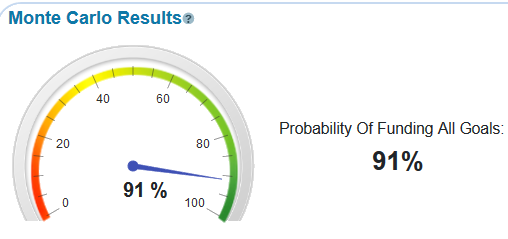
This is a very good start. But what about the bear market scenario? I re-ran this scenario and found that they are now much more able to withstand a downturn.

This is a really good example of how diversification can help a portfolio in a market downturn. Their Monte Carlo probability of never running out of money was only 42% in the previous bear market scenario that we ran. Now it is 77%! This is a testament to the value of having less correlated investment assets, better known as diversification.
See If You Are Prepared
A lot of people were caught off guard in the last two recessions. The stock market decline was severe and really impacted a lot of investment portfolios and retirement plans. During that time there were too many people taking on too much stock market risk without being diversified. It is wise to see how well your portfolio is prepared for another potential downturn. One great way to do this is to run it through scenarios similar to the scenarios I ran for this article.
Do you want to see how your investments and retirement plan would hold up under a variety of bear market scenarios? Sign up for a free trial of WealthTrace to find out.